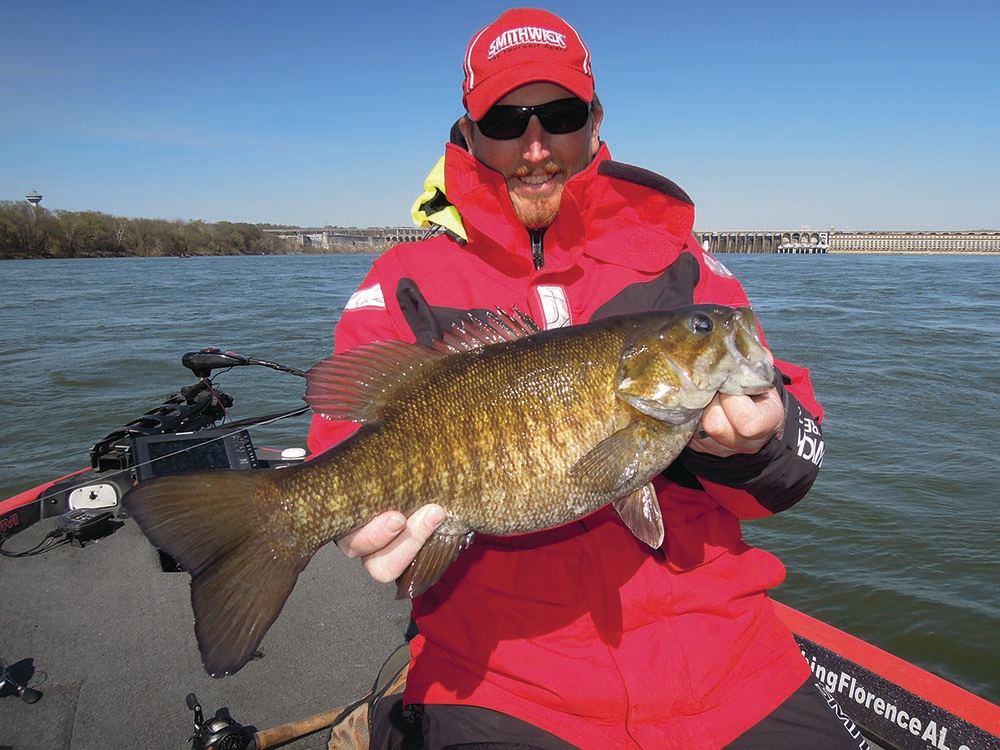Better protective gear can help anglers catch more fish
By John N. Felsher

Faced with stinging temperatures – intensified by swirling winds driving snow flurries – most anglers would probably wait for a better day, or month, to go fishing. But proper protective gear can allow anglers to fish in relative comfort on days when most people would rather sit next to a roaring fire.
“I fished some really bad days, but one in particular stands out,” remembers Denny Brauer, a former Bassmaster Classic champion. “During one tournament, the ramp got so slick that people were almost launching their trucks along with their boats. All my rod compartments froze shut. I had to borrow my wife’s hair dryer to thaw the locks. We made a run to the lower end of the lake and pulled into a creek. I told my partner, ‘We’re going to be here all day. I’m not making another run.’ I actually caught a really good bag that day because I kept my bait in the water and didn’t want to run anywhere else in the cold.”
In the old days, many anglers wore army-surplus field jackets, bulky “long johns” under jeans, jumpsuits or maybe sweatpants and anything else they could find to ward off the chill. They topped that ensemble with heavy woolen shirts and jackets. In extreme cold, some put on down parkas. Not designed for fishing, these heavy outfits offered protection, but didn’t allow much mobility or relief from rain. Fortunately, manufacturers have made significant progress in protective gear technology.
“Back then, we wore so much that we couldn’t move or fish,” recalls Bernie Schultz, a professional angler. “It was so heavy that it wore us out. Today, an angler can buy stuff right off the shelf that is so much better than what we had years ago. Now, we layer ourselves in garments made of high-tech materials designed specifically for fishing. The cut is better, giving anglers more mobility.”
As it progresses, hypothermia, or a lowering of the core body temperature, can cause disorientation, slurring of speech and hamper one’s ability to make decisions. Wetness or wind rapidly exacerbates the effects of hypothermia. A person immersed in 40-degree F waters can lose consciousness in 15 minutes and die in 90.
 Today, anglers can buy lightweight, waterproof products designed specifically to keep them warm, dry and comfortable in weather extremes. For starters, protect the head. Many anglers wear insulated or knit wool coverings to protect their heads, faces and necks on extremely cold days. Some wear beanie-type caps and might add wide coverings similar to sweatbands over the ears. Put a sweatshirt hood over this covering, followed by the hood on the outer coat to keep warm and dry.
Today, anglers can buy lightweight, waterproof products designed specifically to keep them warm, dry and comfortable in weather extremes. For starters, protect the head. Many anglers wear insulated or knit wool coverings to protect their heads, faces and necks on extremely cold days. Some wear beanie-type caps and might add wide coverings similar to sweatbands over the ears. Put a sweatshirt hood over this covering, followed by the hood on the outer coat to keep warm and dry.
The old adage, “dress in layers” still applies, but with modern garments, layers don’t need to make a person resemble a tire company logo. Most people start with ultralight Gore-Tex thermal undergarments and add a thick shirt or sweatshirt over them. Some wear thin, insulated waterproof pants over jeans or trousers. Others prefer bibs, which resemble overalls on steroids. On the outside, many anglers don waterproof all-weather coats or parkas to fight biting cold, block the wind and repel rain or spray.
Nothing makes a person more miserable in cold weather than wet socks and icy feet. Some people wear waterproof thermal socks to keep their feet dry. Some people wear battery-operated electric socks. Over those, add waterproof shoes or boots.
“It’s miserable all day if you step into a puddle or walk down to the boat and barely slip into the water at the ramp, getting the socks wet in the morning,” says John Cox, a professional angler. “Wearing waterproof shoes makes a huge difference for the rest of the day as long as I don’t step in water over my ankle. I like a waterproof shoe that feels like a sneaker, but keeps my feet dry. If it’s really cold, I’ll wear insulated waterproof boots, but I can’t move around in boots that well.”
Thick gauntlet-style gloves protect hands while running the boat, but anglers can’t easily turn reel handles with them. Many companies now make thinner insulated gloves that keep hands warm, but still allow anglers to better use their fingers. Some gloves come with small pockets to insert chemical air-activated hand warmers for additional comfort.
Before heading out to face the elements, start with a good, hot breakfast. Anglers who don’t want to stop fishing to eat lunch can nibble high-energy bars throughout the day. Also drink sufficient warm, non-alcoholic liquids. Alcohol can lower a person’s core body temperature and cause dehydration.
John N. Felsher lives in Semmes, Ala. Contact him through Facebook.




